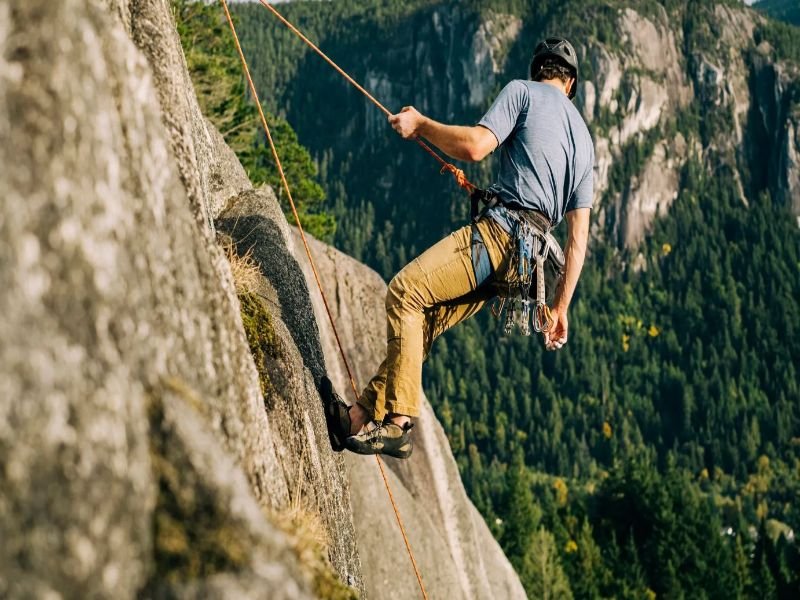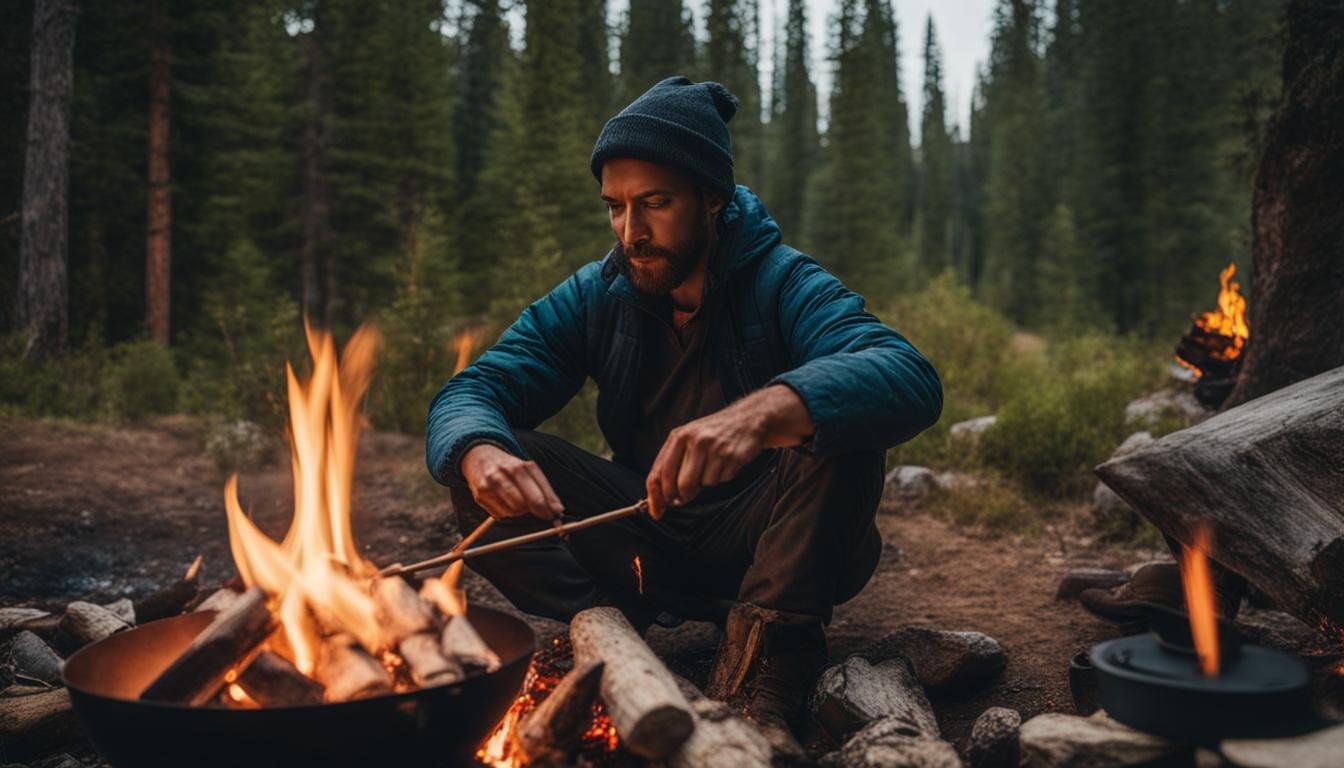Rock Climbing Basics
Discover essential rock climbing basics: gear selection, grading systems, knot tying, belaying techniques, movement tips, safety measures, and more. Elevate your climbing skills today!
Rock climbing is an exhilarating outdoor activity that combines physical strength, mental focus, and a deep connection with nature.
Tips for Biking in Hot Weather
Whether you’re a beginner looking to get started or an experienced climber seeking a refresher, mastering the basics of rock climbing is essential for a safe and enjoyable experience.
Rock Climbing Basics
In this guide, we’ll cover rock climbing basics, from equipment and techniques to safety precautions, ensuring you’re well-prepared for your climbing adventures.
Choosing the Right Gear
- Rock Climbing Harness: Your harness is your lifeline. It should fit snugly but not be uncomfortably tight. Double-check for any signs of wear and tear.
- Climbing Shoes: Climbing shoes provide the necessary grip and precision on the rock surface. Look for a snug fit to maximize sensitivity.
- Helmet: Safety is paramount. Ensure your helmet fits securely to protect against falling rocks and potential head injuries.
- Chalk Bag: A chalk bag helps keep your hands dry and enhances your grip. Consider chalk balls or loose chalk for application.
Understanding Climbing Grades
- Grading System: Climbing routes are rated using various grading systems such as the Yosemite Decimal System (YDS) for outdoor climbing and the V-scale for bouldering. Familiarize yourself with the specific grading system used in your area.
- Bouldering: This is typically short, intense climbing without ropes. It’s often rated using the V-scale.
- Top-Roping: Involves climbing with a rope anchored at the top of the route for safety. Routes are rated based on difficulty.
- Lead Climbing: A more advanced technique where the climber attaches the rope to protection as they ascend.
Knot Tying and Rope Management
- Figure-Eight Knot: This knot is essential for tying into the climbing rope. Ensure it’s properly tied and backed up with a stopper knot.
- Bowline Knot: Useful for various applications, including creating a secure loop for attaching your harness to the rope.
- Coiling and Flaking: Learn to coil and flake the rope properly to prevent knots and tangles, making for a smoother climb.
Belaying Techniques
- Top-Rope Belaying: Understand how to manage slack and keep the climber safe while they ascend.
- Lead Belaying: Learn the techniques for lead belaying, where the climber clips into protection as they climb.
- ATC and Grigri: These belay devices require skill to use effectively. Familiarize yourself with their operation and safety features.
Climbing Movement and Technique
- Balance: Achieving balance is crucial for conserving energy. Distribute your weight evenly and use your legs to push rather than relying solely on your arms.
- Weight Distribution: Shift your weight as needed to maintain stability, especially on overhangs and tricky holds.
- Body Positioning: Understand how to position your body to make reaching holds easier and more efficient.
Safety Measures
- Equipment Inspection: Regularly inspect your gear for any signs of damage or wear. Replace any compromised equipment immediately.
- Buddy Checks: Before climbing, conduct buddy checks to ensure your partner’s gear is properly fitted and secure.
- Safety Protocols: Follow established safety protocols for your climbing area, such as communication signals and emergency procedures.
- First Aid Kit: Carry a well-stocked first aid kit to address minor injuries and ailments.
- Self-Rescue Techniques: Familiarize yourself with basic self-rescue techniques in case of emergencies, such as descending a rope or assisting an injured climber.
By thoroughly understanding and mastering these rock climbing basics, you’ll not only enhance your safety but also improve your overall climbing experience, enabling you to tackle a wide range of routes with confidence and skill.
Rock Climbing Basics (FAQs)
How can I improve my grip strength for rock climbing?
To enhance your grip strength, consider regular fingerboard or hangboard training exercises. These workouts target the specific muscles needed for climbing, helping you build endurance and grip strength over time.
Is rock climbing a safe sport?
Rock climbing can be safe when proper safety measures are followed, including the use of appropriate gear, thorough safety checks, and adherence to climbing guidelines. It’s essential to receive proper training and always climb with a partner for added safety.
What should I do if I get stuck or scared while climbing?
If you find yourself in a challenging situation or feel frightened during a climb, take a deep breath and try to relax. Communicate with your climbing partner if you have one. Assess the situation and look for alternative holds or routes. If necessary, consider retreating or asking for assistance from more experienced climbers nearby.
How do I overcome the fear of heights while climbing?
Fear of heights, known as acrophobia, is common in climbing. Gradual exposure and practice can help reduce this fear. Start with lower climbs and work your way up, gradually becoming more comfortable with heights. Visualization and relaxation techniques can also be beneficial.
Are there age restrictions for rock climbing?
Rock climbing can be enjoyed by people of various ages. Most climbing gyms have age restrictions for certain areas or require adult supervision for younger climbers. However, with proper guidance and safety precautions, individuals of all ages can participate in climbing.
What should I wear for rock climbing?
Wear comfortable, moisture-wicking clothing that allows for a wide range of movement. Climbing shoes should fit snugly for precise footwork. Don’t forget a helmet for safety, especially in outdoor climbing environments.
Can I go rock climbing alone?
While it’s possible to boulder or top-rope climb alone in some cases, it’s generally safer to climb with a partner. Lead climbing and trad climbing usually require a belayer for safety. Climbing with a buddy provides an additional layer of security in case of accidents or emergencies.
How do I find climbing partners or groups?
To find climbing partners or groups, consider joining local climbing gyms, online forums, or social media groups related to climbing. These platforms often connect climbers looking for partners or offer information about climbing meetups and events in your area.
Is rock climbing an expensive sport to get into?
The initial cost of climbing gear can be a bit high, but many climbing gyms offer rental equipment for beginners. Over time, you can invest in your gear as you become more experienced. Outdoor climbing may require additional expenses for permits and travel, but it’s possible to enjoy climbing on a budget.
Is rock climbing a good workout?
Yes, rock climbing is an excellent full-body workout. It engages muscles in the arms, legs, core, and back. Climbing also improves flexibility, balance, and cardiovascular fitness. It’s a fun way to stay physically active and mentally engaged.







